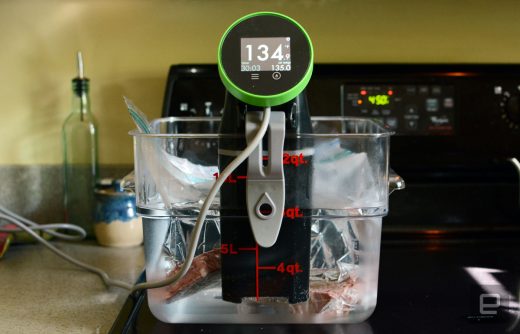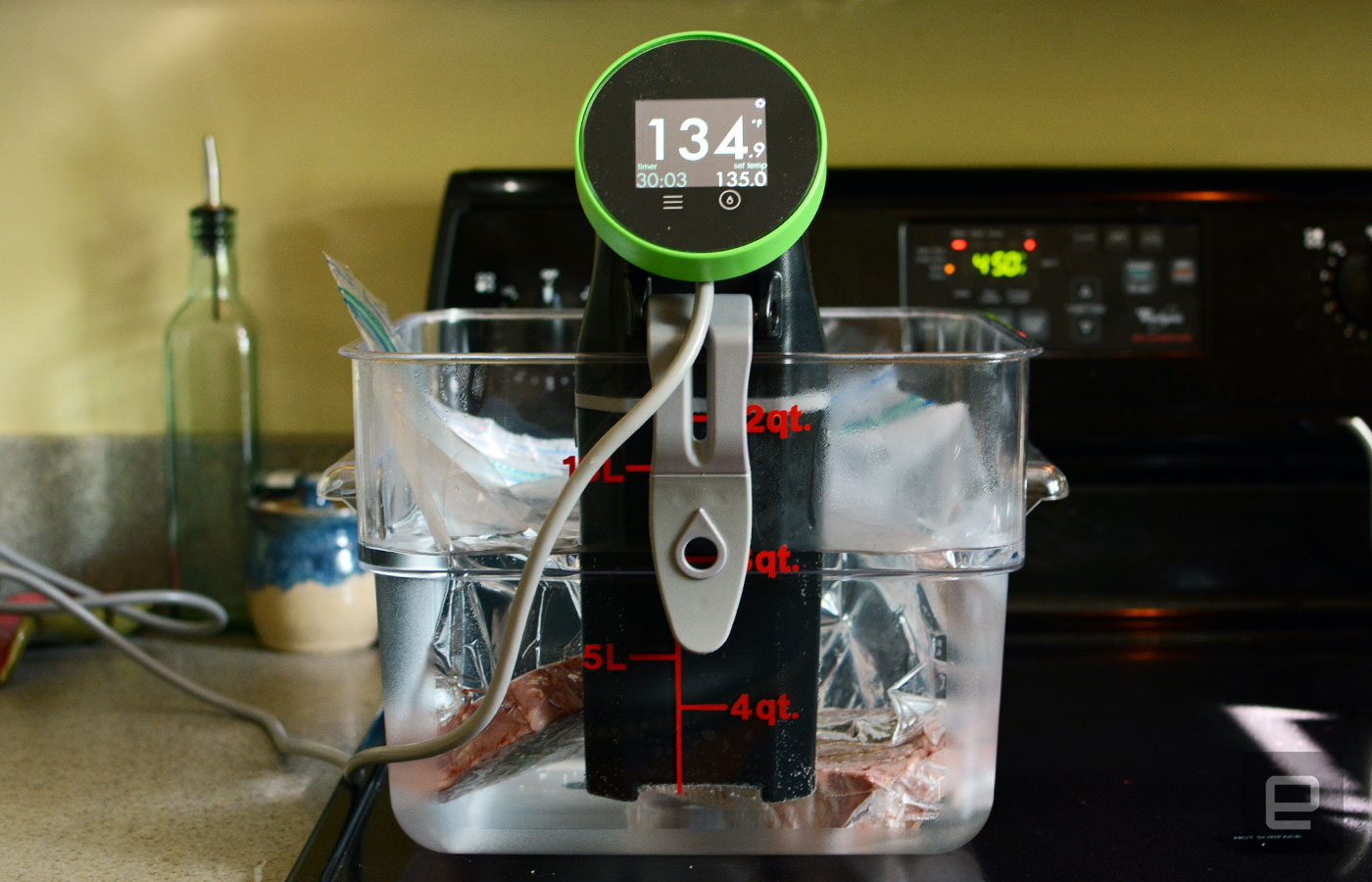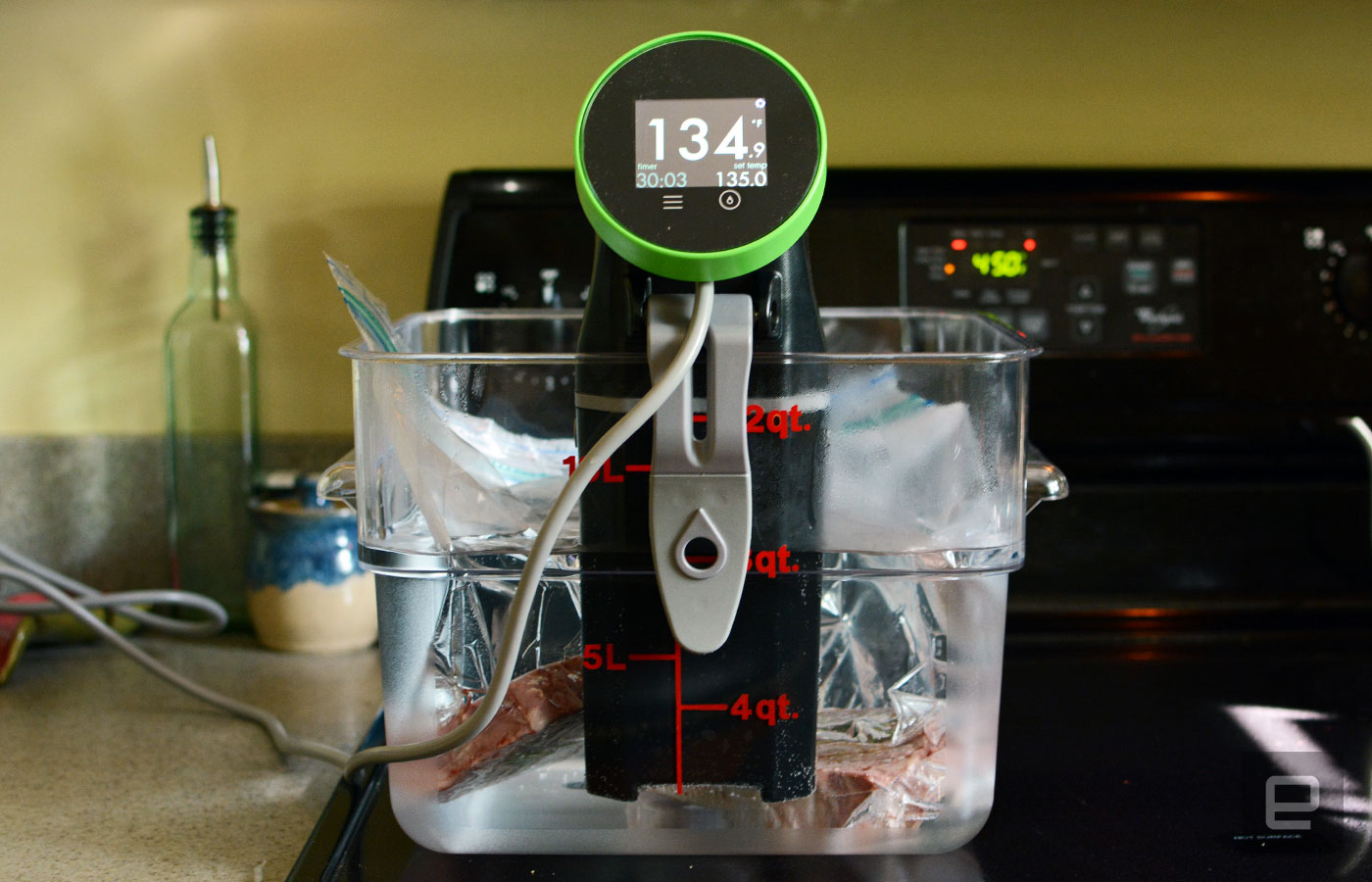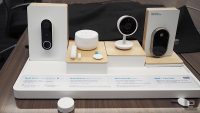Does your sous vide gear really need WiFi?
If you spend a considerable amount of time reading J. Kenji Lopez-Alt’s writings on better cooking through science, you’ll come across his sous vide steak guide. I’ve read what Lopez-Alt and others have to say about the culinary method for preparing a slab of beef, or, more specifically, that cooking a thick steak in a low-temperature water bath before searing produces stellar results. But that process can take a couple of hours for a thicker ribeye or New York strip. Also, keeping watch for that long sounds like an awful way to spend an evening.
That’s where Nomiku’s WiFi sous vide comes in. Thanks to wireless connectivity, you can keep tabs on dinner via a companion app for Android and iOS. At a time when seemingly all of our household devices are connected to the internet, is WiFi essential to the sous vide experience? The $199 Nomiku makes a compelling case.
When you’re first starting out with a new gadget, it’s helpful to read the directions. But even if you’re the type who hates to do that, as I am, Nomiku’s WiFi sous vide is still relatively easy to figure out. The device itself is controlled by a rotating dial around the touchscreen display. While you can use your phone to set the cooking temperature and time, you’ll need to interact with the device itself for some setup — mainly connecting to your home WiFi network. From there, entering the temperature and time is straightforward, even if you don’t glance at that step-by-step list.
At that point, you can still manually dial the settings on the device each time you want to cook. Nomiku’s WiFi model clips on the front of your sous vide container or pot rather than attaching to the backside like the Classic option (which doesn’t have WIFi capabilities). This means you’re not reaching across somewhat hot water to make adjustments, if you need to do so. The WiFi model is noticeably larger, so you’ll want to make sure you have a cooking vessel that will accommodate both the device and whatever you’re cooking.
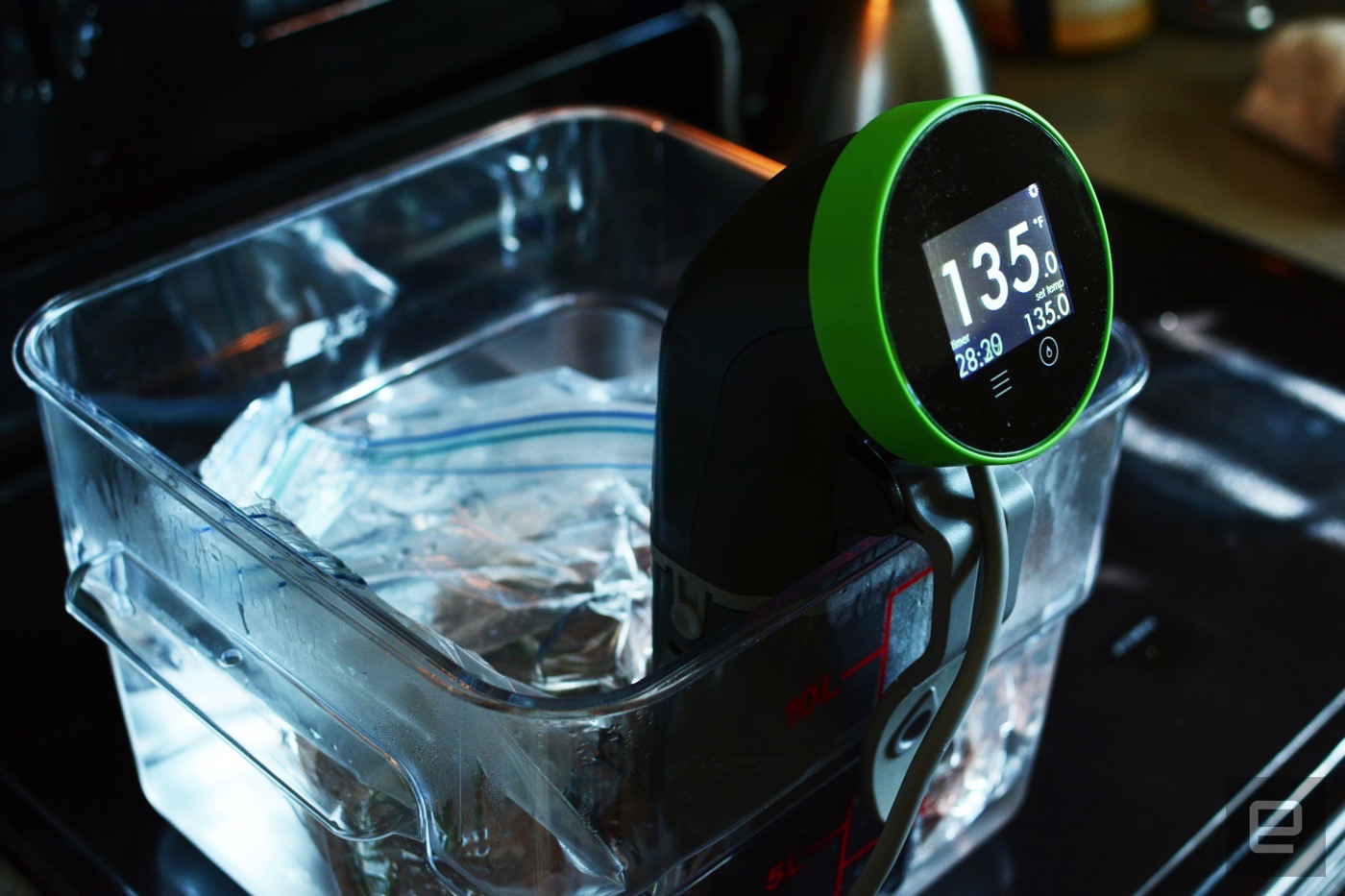
This is 2016, though, and you use your phone to do nearly everything. That includes monitoring your precious steaks while they cook slowly in a warm bath. The Nomiku Tender app is where I spent most of my time in my own tests. I found that I could enter temperatures and cooking times much faster than when I had to rotate the physical dial and tap the display. What’s more, I didn’t have to stand in front of the gadget to do so, provided I’d already filled the cooking container with water and put the Nomiku in place.
Before I get into the finer points of the app, let’s chat about the difference between the Android and iOS versions. I have a Moto X, so naturally I tried the Android offering first. I found that it was a pain to use; even connecting to the Nomiku felt like a chore. My wife has an iPhone 6s, though, so it was easy for me to make the jump to the iOS version. Tender offers a better experience for the iPhone in both design and usability, but a Nomiku spokesperson told me the company is working to get the Android version on par with its iOS counterpart.
Once you set the water temperature, it takes a few minutes for the Nomiku to heat it to the desired level. I’ve been told a watched pot never boils, so I’d assume the same applies to a sous vide. Thankfully, I didn’t have to find out: The Tender app will notify you when your cooking setup is almost ready for action. I found that by the time I received the alert and placed my seasoned steaks in a bag with some fresh rosemary, the Nomiku had heated the water to the correct temperature.
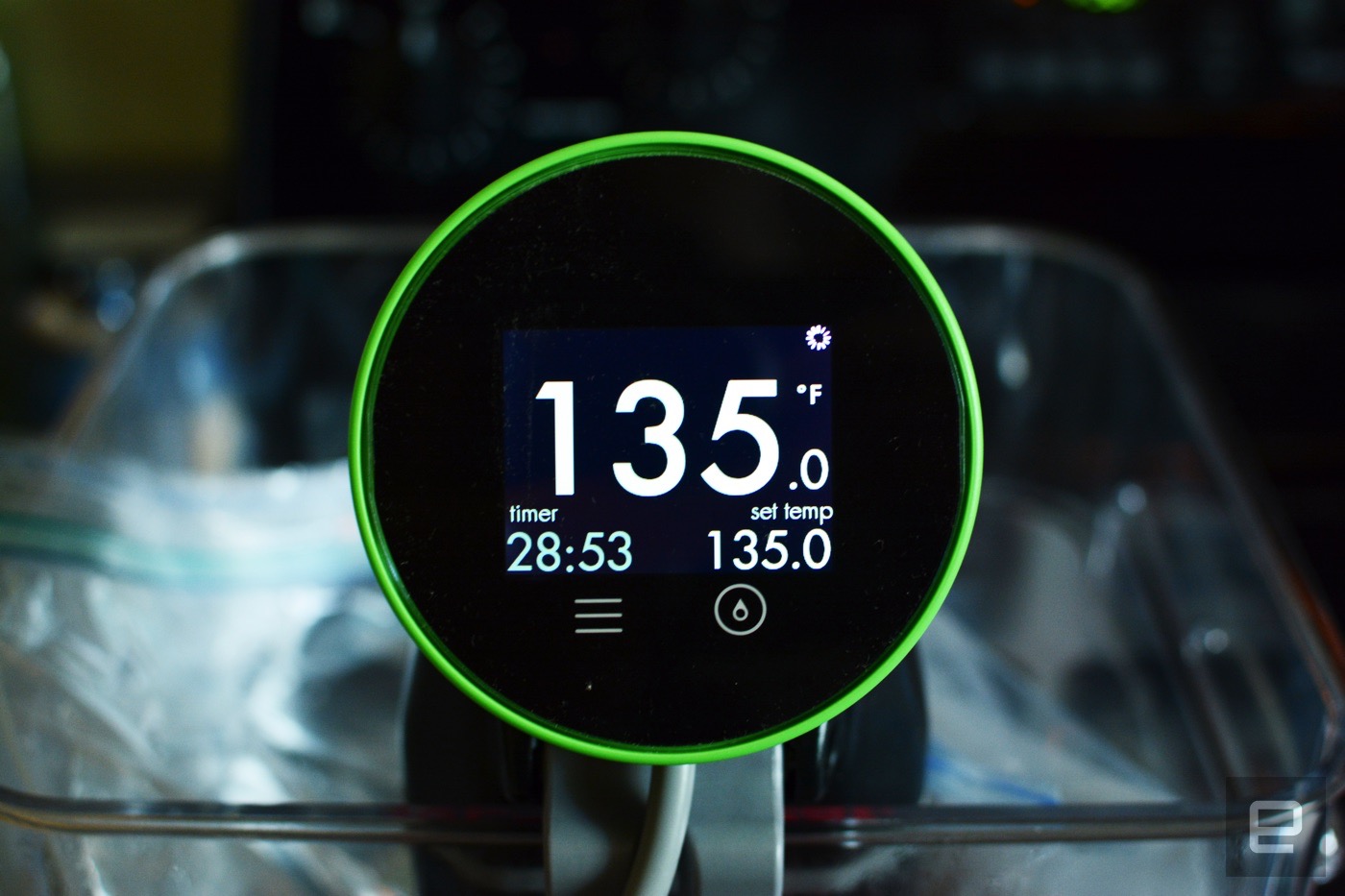
From there, cooking is as easy as dropping the goods into the water and setting the timer. The Nomiku displays the temperature and time info on the built-in display as well as inside the Tender app, so if you leave your phone on the deck when you grab another beer, you can glance over at the device for an update while you’re in the kitchen. The first two times I used the device, the iOS app blew up with alerts that the temperature had dropped about eight minutes from the end of the cooking time. After speaking with Nomiku about the problem, it turned out that I had a defective unit that was lowering the temperature before it should have. The company quickly sent me a replacement, though, and I’m happy to report that I haven’t experienced the same issue since.
While the Tender app is great for controlling the Nomiku remotely, it also serves as your recipe box, with a library of dishes collected from other users. Looking for something besides steaks, I used one of the recipes for some slow-boiled eggs. Perhaps more importantly, you can save your own settings in the app so that you don’t have to remember them in the future. This is particularly useful when cooking steaks once you find the perfect cooking time. With both recipes from others and your own saved items, tapping on the food and selecting “Start cooking” will wake up the Nomiku and set it to the correct temperature before you even get up from the sofa.
When the cooking time is nearly up, the Tender app will send a notification to your phone. In the case of my steaks, that was my cue to fire up the grill so I could get a nice sear on the outside. Sure, you could eat the meat immediately, but it wouldn’t be nearly as appetizing or look as good as it does after you use a grill or cast-iron skillet to put a crust on it. Once you’re finished cooking, simply dump the water and let the Nomiku air-dry. The bottom is also removable for easy cleaning.

Yes, I know I didn’t let it rest. Maybe next time.
Aside from the temperature issue with the first unit I tested, I found the Nomiku easy to use, especially after I saved my recipes. I would suggest investing another $50 to $60 in a vacuum sealer if you’re going to get serious about sous vide, but for steaks, sealing ziplock bags with the displacement method worked fine. Speaking of price, I already mentioned that the new WiFi model will set you back $199. That’s the same price as Anova’s WiFi-equipped model, which also works in tandem with a mobile app. The Nomiku is typically $249, though, and there’s no indication of how long the current discounted price will stay in effect.
If you’d rather babysit a device the old-fashioned way, there are a number of sous vide options that don’t offer WiFi connectivity. The Nomiku Classic is also priced at $199 while the Anova version costs $179 and includes Bluetooth. There are a truckload of other options with a range of features. I used the WiFi Nomiku for steaks and slow-cooked eggs, but you can use a sous vide for fish, chicken and lots of other things. In fact, that’s where the Tender app is probably the most useful: giving rookies a starting point and inspiring experienced cooks to try something new.
At $199, this gadget is an investment, but I don’t think I’ve eaten a steak that was more tender than the one I slow-cooked in a hot water bath for over an hour and seared on a charcoal grill. It was a perfect medium pink from edge to edge. Sous vide makes it easy to cook a thick New York strip evenly, and, thanks to Nomiku’s connectivity, I didn’t have to constantly walk into the kitchen for a status update.
(22)

